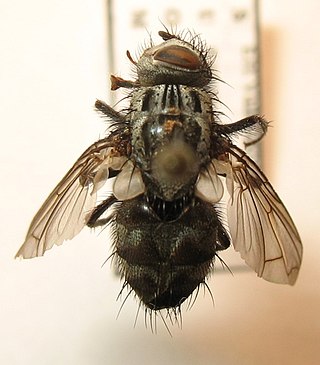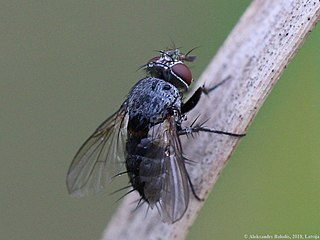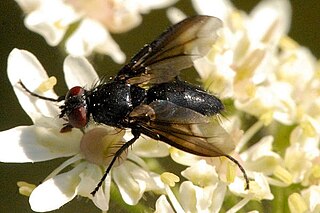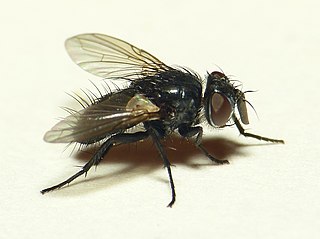Melanasomyia is a genus of flies in the family Tachinidae.

Billaea is a genus of flies in the family Tachinidae. Most larvae, where known are parasitoids of Coleoptera or Lepidoptera (Pyralidae)
Ceracia is a genus of bristle flies in the family Tachinidae.

Ceromya is a genus of flies in the family Tachinidae.
Compsoptesis is a genus of flies in the family Tachinidae.

Nemoraea is a genus of flies in the family Tachinidae.

Peribaea is a genus of flies in the family Tachinidae.

Siphona is a genus of flies in the family Tachinidae.

Linnaemya is a genus of flies in the family Tachinidae.

Actia is a genus of large flies in the family Tachinidae.

Dexia is a genus of flies in the family Tachinidae. Most larvae are parasitoids of beetles (Scarabaeidae).

Dexiinae is a subfamily of flies in the family Tachinidae.

Exoristinae is a subfamily of flies in the family Tachinidae. Most species are parasitoids of caterpillars.

Blondeliini is a tribe of parasitic flies in the family Tachinidae. Larvae are parasitoids of other insects, mostly beetles and caterpillars. Although nearly cosmopolitan, its greatest diversity is in the New World and especially in South America.

Eryciini is a tribe of flies in the family Tachinidae.

Leucostomatini is a tribe of flies in the family Tachinidae, found worldwide.

Tachininae is a subfamily of flies in the family Tachinidae.

Minthoini is a tribe of flies in the family Tachinidae.
Neaerini is a tribe of flies in the family Tachinidae.

Aphantorhaphopsis is a subgenus of flies in the family Tachinidae. Some consider this to be a subgenus of Siphona, most European workers seem content that this is a genus in its own right. They are known from the Palearctic, Afrotropical and Oriental regions.















